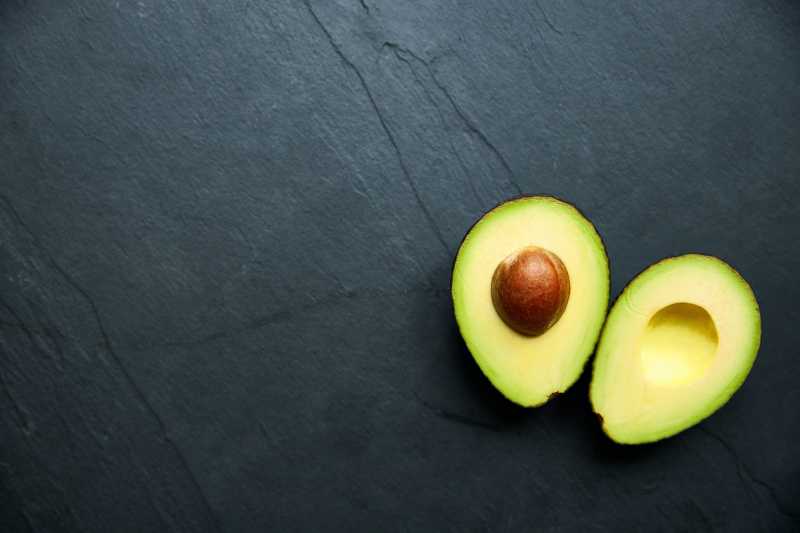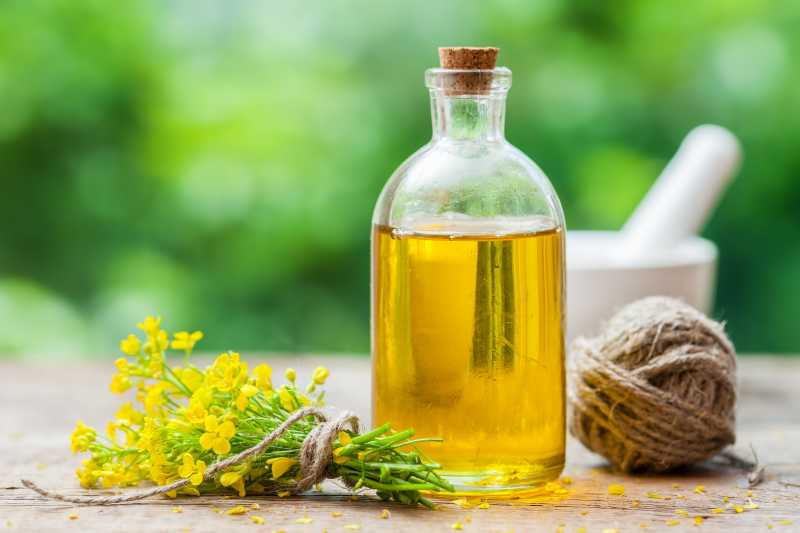A Guide to the Best Oils for Cooking and Baking
Taking a walk through the aisles of your local market or health store, the vast array of different cooking oils available can be quite intimidating. From coconut oil and avocado oil to the more common olive oil and sunflower oil, discover which oil is best for what, and how to cook with them like a pro using our comprehensive guide to cooking oils.
What are the properties of cooking oils?
The first thing to know and understand about cooking oils is that they all have different purposes and properties. Some oils are perfect for cooking at high temperatures while some are never supposed to be heated at all. This is due to their individual smoke points and oxidative stability.
Smoke Point
Smoke point refers to the temperature at which fat in the oil begins to break down and turn into smoke. Generally, this means that an oil with a higher smoke point is more refined and features fewer impurities and free fatty acids that can cause the oil to smoke, making them better for cooking at high heat.
Oxidative Stability
Oxidative stability relates to how resistant these fats are to reacting with oxygen.
Learn Cooking & Baking
Upgrade your skills in the kitchen and learn how to cook and bake like a master chef.

What are the best cooking oils to use?
Now, let’s take a look at the breakdown of some of these oils, and discover the best ways to use them for cooking or baking.
Avocado oil

Smoke Point: 500°F (270°C) - Refined
Calories: 40
Avocado oil has the highest smoke point of all the cooking oils, however, with it comes a hefty price tag, along with a delightful nutty flavour. Refined avocado oil will have a higher smoke point of up to 520°F. This makes avocado oil the perfect high-heat cooking oil.
Is avocado oil better for you than olive oil?
With health benefits very similar to olive oil, and a high smoke point that is stable, thus avoiding toxins and trans fats, as well as being low in polyunsaturated fat, avocado oil is one of the best options for high-heat applications. However, something to keep in mind is that virgin avocado oil comes in at 350°F-375°F degrees, similar to olive oil.
Olive oil
Smoke Point: 320°F–405°F (160°C–207°C) - Extra Virgin
Smoke Point: 390°F–407°F (199°C–243°C) - Refined
Calories: 40
Many believe that olive oil is unsuitable for cooking because of its unsaturated fats. When exposed to high heat, the intrinsic properties of the fats present may be altered. This is probably the reason why you may have heard many being wary of using olive oil for cooking. It turns out, though, you can use olive oil for low and medium-heat cooking, and cooking with olive oil may also provide many health benefits.
Which olive oil is best for cooking?
However, it's important to understand the grades of olive oil before using it for cooking. The highest (and best) grade of olive oil to cook with is extra virgin olive oil, followed by virgin oil, and, lastly, refined virgin oil. These grades are defined by their methods of extraction and further use of chemical solvents during processing, extra virgin being of the highest quality and also the healthiest.
→ RELATED READING:
- How to Make a Soufflé
- How to Eat For Your Dosha
Coconut oil

Smoke Point: 350°F - Virgin
Smoke Point: 400°F - Refined
Calories: 39
Coconut oil is 100% fat, 90% of which is saturated. It comes from the flesh of a coconut and is popular in many Southeast Asian countries. Because these countries are associated with lower rates of heart disease, it is easy to assume that coconut oil is healthy. Of course, there are two types of coconut oil: virgin and refined coconut oil. Virgin coconut oil is cold-pressed and extracted without using solvents. It is considered to be “pure” or unrefined. Meanwhile, refined coconut oil involves significant processing and often includes additives. This is the type you find on most supermarket shelves.
Is coconut oil good for cooking?
Before you begin cooking with coconut oil, it is important to know which type you are using. The smoke point of virgin coconut oil is 350°F, making it best for baking and sautéing. The smoke point of refined coconut oil is 400°F, which makes it a better option for frying or cooking at higher temperatures. In most cases, you can substitute coconut oil 1:1 for other oils and butters.
When it comes to baking, coconut oil deserves its own entry aside from other oils. It is unique because it is solid when cool but becomes liquid when exposed to slightly higher than room temperature. This can make it a little bit inconsistent when substituting it for butter. It can be used in cookies, cakes and even pie crust, and imparts a delicate coconut flavour that can add a unique element to the goodies. However, its different texture can sometimes yield slightly heavier baked goods. Some people use a 1:1 ratio when substituting coconut oil for butter. Personally, I find that if substituting coconut oil for butter in a recipe, it’s best to reduce the amount by about one tablespoon per cup (so if substituting one cup of butter with coconut oil, you’d use one cup minus one tablespoon). Add a tablespoon of coconut oil to your chocolate brownies to give you a moist gooey centre!
Flaxseed oil
Smoke Point: 225°F (107°C) - Virgin
Calories: 40
Flaxseed is more commonly ingested as a supplement for skin and heart health but when used for cooking, flaxseed oil has its share of benefits. Sometimes referred to as linseed oil, flaxseed oil is extracted from the dried seeds of the flax plant, often by cold-pressing them when ripe. The label “virgin” on bottles of flaxseed oil implies that the oil was extracted by mechanical means only, without the use of any chemical solvents. Refined flaxseed oil implies the opposite.
Flaxseed oil is full of nutrients such as potassium and Omega-6 and Omega-3 fatty acids, the latter of which has been reported to improve heart health, reduce inflammation, and lower the risk of certain types of cancer. Other proven benefits of flaxseed oil include lowering cholesterol, boosting digestive health, and reducing acne and the severity of breakouts.
Is flaxseed oil good for high-heat cooking?
Typically, flaxseed oil tends to have a lower smoke point than other cooking fats, roughly 225°F, which does not make it the best option for high-heat cooking or roasting. When cooked at high heats, flaxseed oil can burn and lose its crisp flavour, taking on an acrid taste. Consuming flaxseed oil raw (i.e. before it has been exposed to heat) is the best way, but it can be used for low-heat cooking, and as a rich addition to salad dressings or sauces.
While you maybe should not use flaxseed oil for your next stir-fry, it's great for making sweet dessert toppings, and it adds a pleasant nutty flavour to savoury dishes.
Grapeseed oil
Smoke Point: 421°F (216°C)
Calories: 40
You won’t be surprised to learn that grapeseed oil comes from, you guessed it, the seeds of grapes. High in polyunsaturated fats and vitamin E, it has a high smoke point, which makes it a good substitute for olive or vegetable oils when stir-frying and sautéing. Grapeseed oil has a very mild, nutty flavour, also making it a good choice for baking or salad dressings as it won’t overpower other more flavoursome ingredients in the dish.
Canola oil

Smoke Point: 428°F–446°F (220°C-230°C)
Calories: 40
Canola oil is one of the best oils for heart health. Made from crushed canola seeds, it has less saturated fat than any other oil commonly used in the U.S. The numbers? Well, canola oil has 7% saturated fat, compared to 9% for sunflower oil and 14% for olive oil. Canola oil is also very high in healthier unsaturated fats. It is higher in omega-3 fatty acid and alpha-linolenic acid (ALA) than any other oil except flaxseed oil. ALA is particularly important to have in your diet because your body cannot make it. Studies show that ALA may help protect the heart through its effects on blood pressure, cholesterol, and inflammation.
Can you fry with canola oil?
Because of its neutral taste, high and stable smoke point of 428–446°F (220-230°C), and smooth texture, canola oil is considered a versatile cooking oil. You can use it in several dishes and high-heat cooking methods, like:
- As a cooking oil for frying, grilling, and baking.
- To coat your pans for non-stick baking.
- Instead of solid fats (such as margarine and butter) in recipes.
Sunflower oil
Smoke Point: 225°F (107°C) - Unrefined
Smoke Point: 486°F–489°F (252°C-254°C) - Refined
Perhaps the most commonly used oil on this list, sunflower oil is a mild-tasting plant-based fat that’s often used for sautéing, stir-frying, deep-frying and baking. Light in colour with a slightly nutty flavour, sunflower oil has one of the highest concentrations of polyunsaturated fat (69%) among cooking oils. It supplies some monounsaturated fat (20%) and is low in saturated fat (11%), making it an overall heart-healthy option.
Is sunflower oil healthy?
Sunflower oil is high in Vitamin E, which promotes healthy skin. It is also considered to be a good all-purpose oil because it can withstand high cooking temperatures. There are a few varieties of sunflower oil though, and some are higher in monounsaturated fats than others. When shopping, customers may see “high-oleic” versions of sunflower oil — this means the oil has been modified to be richer in oleic acid and is full of beneficial monounsaturated fats. High-oleic sunflower oil has a fatty acid profile that more closely resembles an oil that is mainly monounsaturated fat, like olive oil, than conventional sunflower oil.
Tips for baking with oil
While solid fats such as butter and margarine may be more commonly used for baking, liquid oils, particularly sunflower oil and canola oil, can also be used in many different recipes. You will find these oils are frequently used in quick breads and certain types of cake (such as carrot cake). This results in a slightly more moist and airy, coarse-textured crumb.
When substituting oil for butter in a recipe, reduce the amount slightly: ¾ cup of oil per 1 cup of butter is a good rule of thumb. Oil can sometimes be employed in glazes or sauces and can even be used to make a unique ganache; however, you will not have much success trying to substitute it for butter in a classic buttercream recipe.
Want to sharpen your cooking skills?
Learn how to cook with confidence, and gain the skills you need to give you an edge in the culinary world. Join Upskillist top-rated online Cooking and Baking course today!




